For Women’s History Month, learn what life was like for Paula Strother, a student at Arlington Hall Junior College for Women, from her 1940s scrapbook.
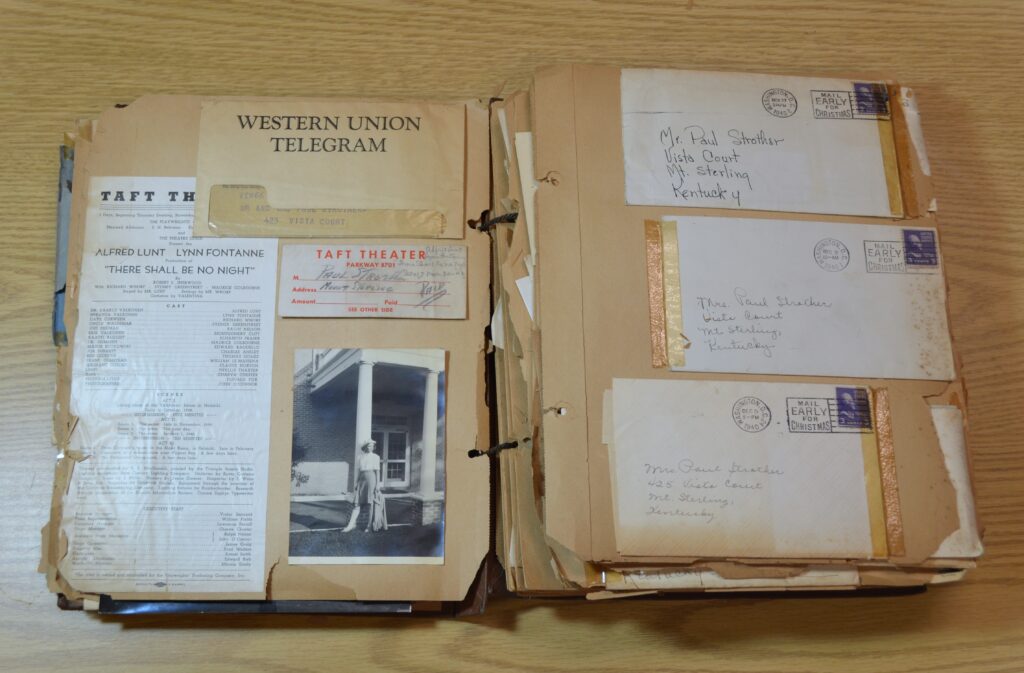
A peek into what Paula Strother’s scrapbook looked like upon donation. Documents and pictures that could be safely removed have since been rehoused to prevent further damage from the acidic paper. This and all the images following are taken from RG 312: Eric Dobson Collected Materials.
Eric Dobson is always searching for artifacts of Arlington’s history to donate to the Center for Local History for preservation and research. One of his many discoveries was this scrapbook, compiled by Arlington Hall student Paula Strother.
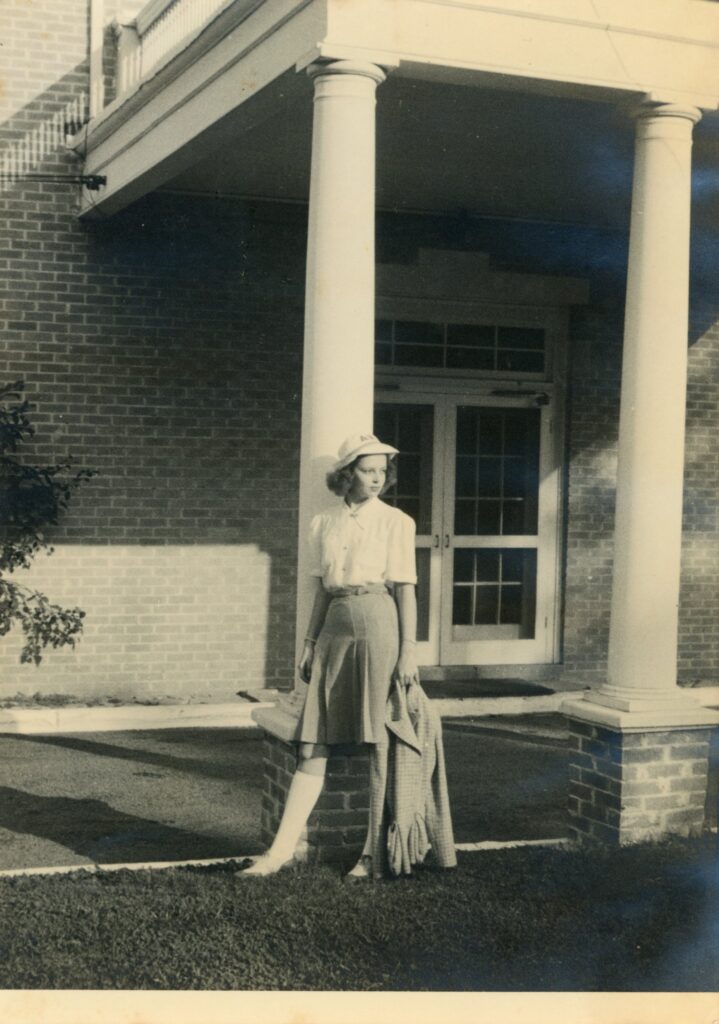
A picture of 18-year-old Paula Strother taken ca. 1940 while she was attending Arlington Hall.
Paula Claire Strother was born on August 24, 1922, to Claire (née Farmer) and Paul Strother in Mt. Sterling, Kentucky. She attended Arlington Hall for her junior year of college from 1940-1941. Arlington Hall was founded in 1927 as a private post-secondary women’s educational institution, which had acquired the name “Arlington Hall Junior College for Women” by the time Paula enrolled. The school suffered financial problems in the 1930s during the Great Depression and became a non-profit institution in 1940.
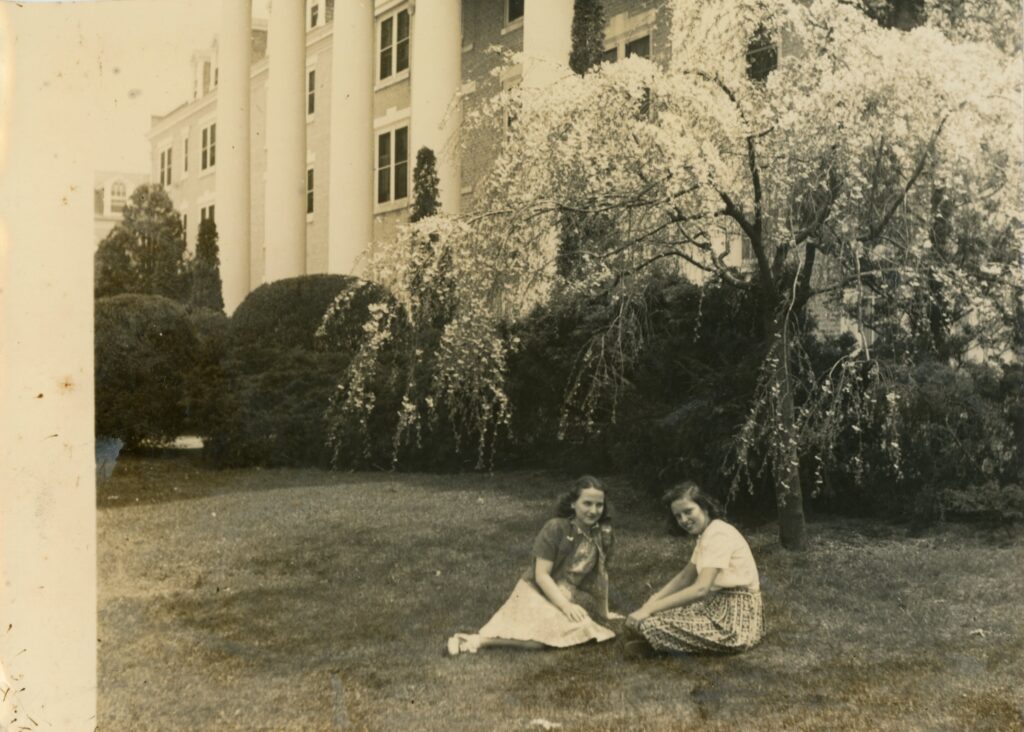
A photograph of Paula’s friends in front of Arlington Hall’s historic main building, ca. 1940-1941.
Arlington Hall was a finishing school that aimed to instruct young women in social graces as a preparation for entry into society. This is reflected in Paula’s packed class schedule, which shows that she took lessons in speech, hygiene and “physical grace and charm” alongside more conventional courses in French, history, biology and English.
Paula was less than fond of her busy course load. In letters to her parents, she often complained about studying for exams and felt her teachers’ grades were too harsh. In one letter to her mother, Paula sums up her feelings quite succinctly: “College — Bah!”
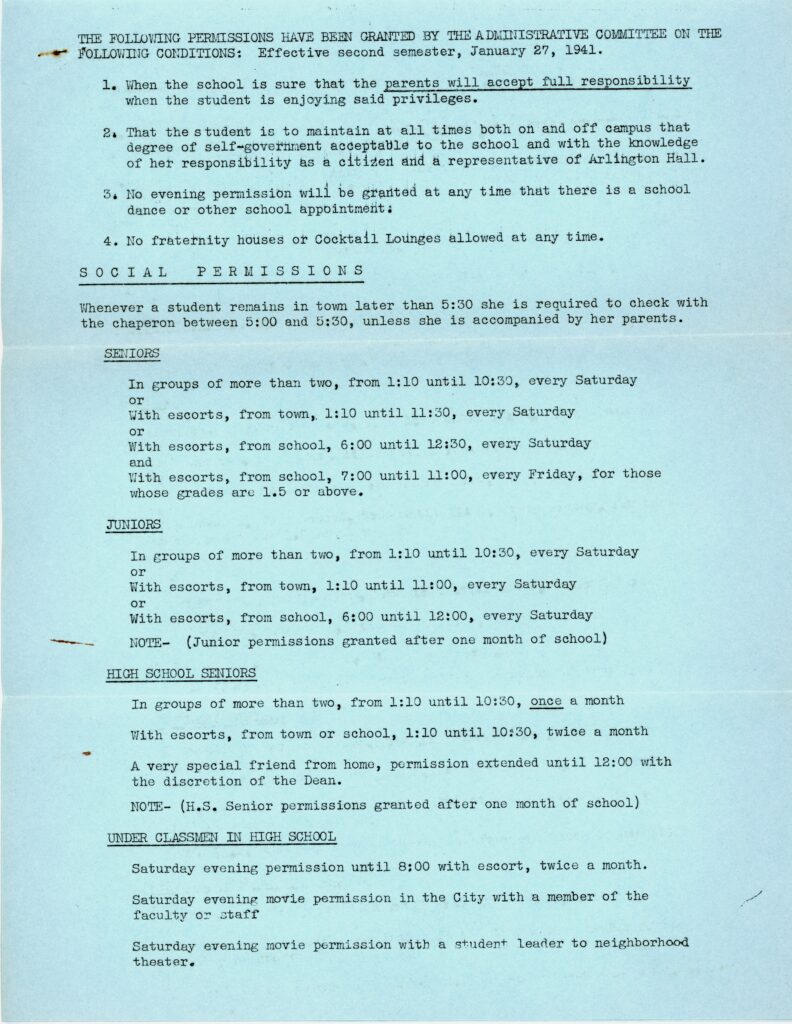
A document sent to Paula’s parents detailing the “social permissions” granted to students based on their grade and academic standing.
Life at Arlington Hall was regimented. There were strict rules about how students could spend their time outside of school functions. They were expected to abide by curfews, travel in groups or with escorts and avoid “fraternity houses or Cocktail Lounges” altogether. In multiple letters, Paula reveals that she is writing in secret, hiding in the bathroom after “lights out.”
Disobedient students were forbidden to leave the school grounds — “campused,” as Paula calls it. She experienced this when she was punished for smoking in her dorm and cutting class. She made the most of it by forming the “Campused Coquettes Club” in solidarity with other campus-bound women.
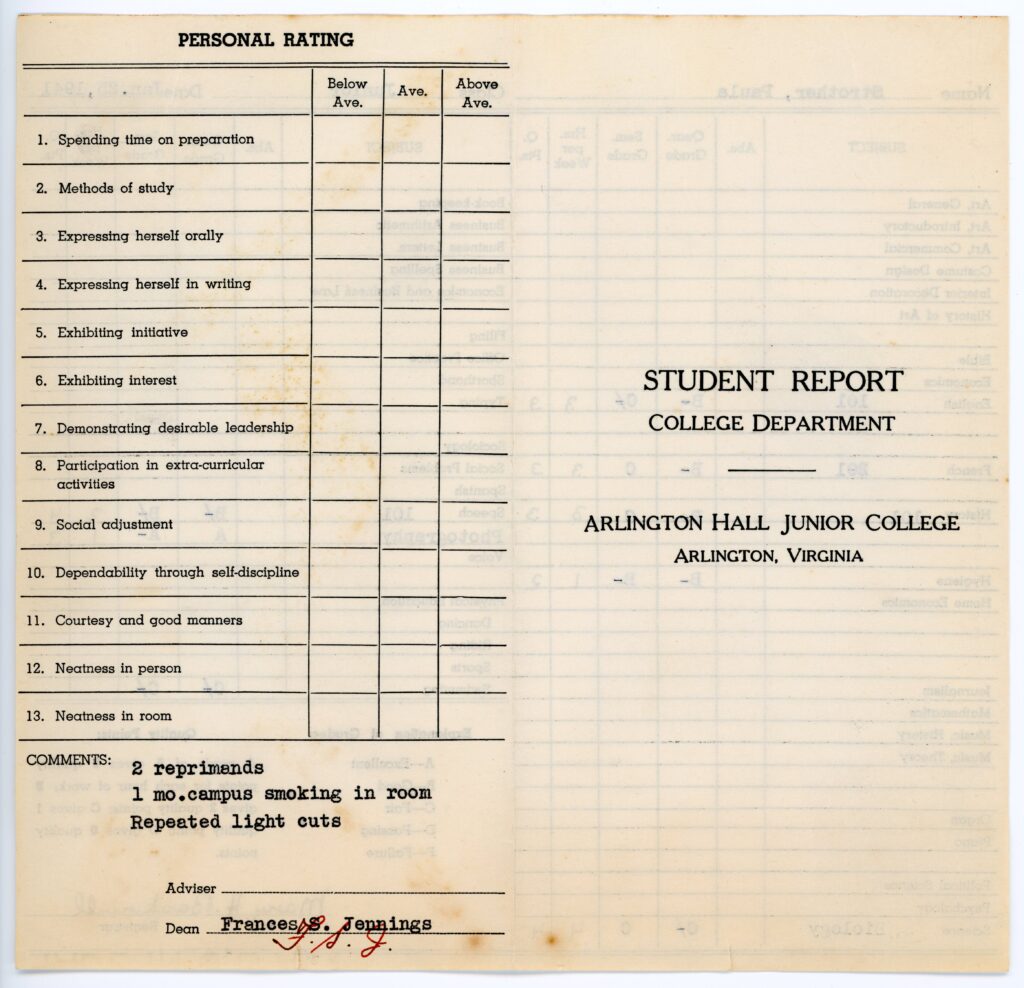
Paula’s report card from January 25, 1941, with two reprimands for smoking and cutting class.
Although she was busy with her classes, Paula still found plenty of opportunities to explore the East Coast, go on dates, attend dances and play bridge. She visited many of the same sights that bring tourists in every year, including the Lincoln Memorial, Mount Vernon and Arlington Cemetery, where Paula saw President Franklin Roosevelt while attending an Armistice Celebration.
On a school trip to New York City, she saw the Rockettes perform at the Radio City Music Hall, caught a play on Broadway and watched the Ice Follies accompanied by Abe Lyman.
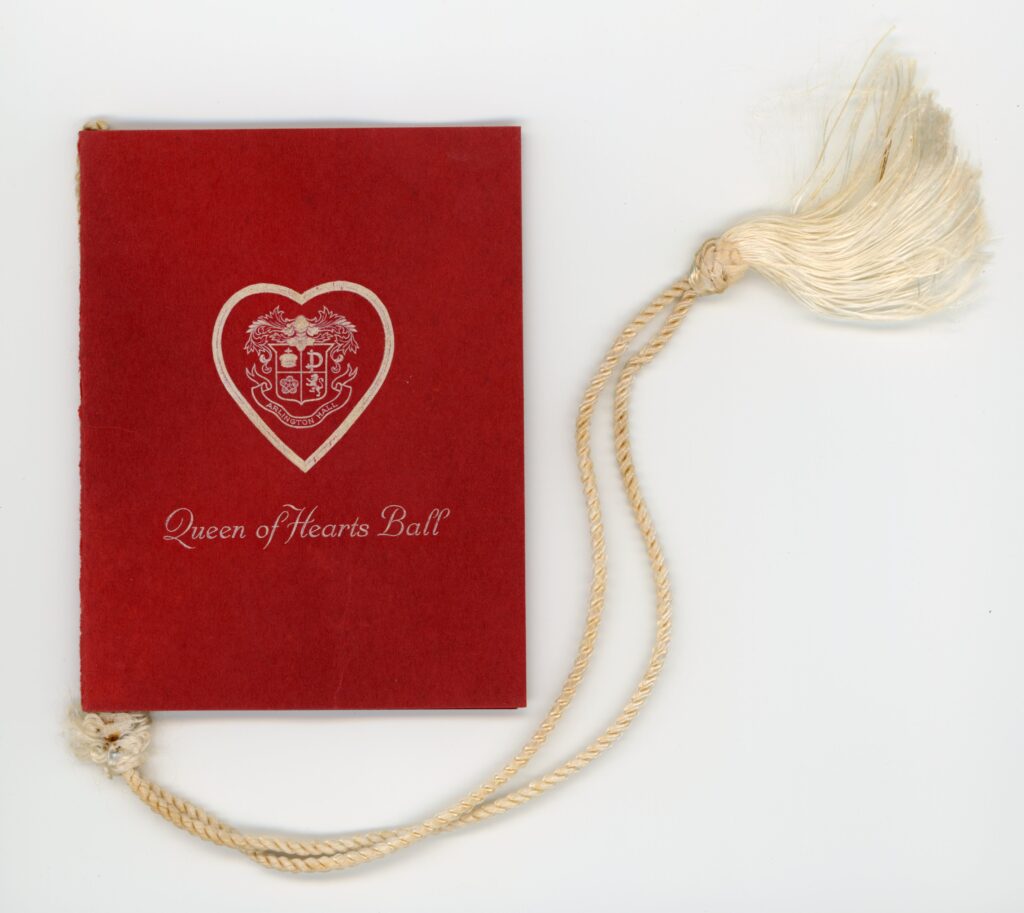
Program for the Queen of Hearts Ball that Arlington Hall put on around Valentine’s Day, 1941.
Paula chose not to re-enroll at Arlington Hall for her senior year. From her letters, it’s implied she was considering putting her photography skills to work the following year by finding a job at home in Kentucky. Either way, Arlington Hall Junior College for Women would close a year later due to lack of funding.
Following the attack on Pearl Harbor and U.S. entrance into World War II, on June 10, 1942, the U.S. Army took possession of the facility under the War Powers Act for use by its Signals Intelligence Service. The historic main building of the girls' school currently houses classrooms and administrative offices for the Foreign Service Institute, while the western part houses the Army National Guard Readiness Center.

Paula (second from right) with friends and teachers.
It is worth reflecting that were it not for incredible luck and the generosity of donor Eric Dobson, Paula’s story would have been lost. This is true of many women’s histories, particularly those recorded in formats like scrapbooks that have only recently been acknowledged as important cultural artifacts that capture the daily lives of ordinary people.
Thank you, Eric, and thanks to everyone dedicated to preserving women’s history!
If you’re interested in learning more about Arlington Hall, check out RG 3: Arlington Hall, Collected Archival Materials from the Community Archives. See also the “Spinning Wheel” Arlington Hall yearbook for the class of 1940.
Help Build Arlington's Community History
The Center for Local History (CLH) collects, preserves, and shares resources that illustrate Arlington County’s history, diversity and communities. Learn how you can play an active role in documenting Arlington's history by donating physical and/or digital materials for the Center for Local History’s permanent collection.
Do you have a question about this story, or a personal experience to share?
Use this form to send a message to the Charlie Clark Center for Local History.
Center For Local History - Blog Post Message Form
Do you have a question about this story, or a personal experience to share? Use this form to send a message to the Center for Local History.
"*" indicates required fields